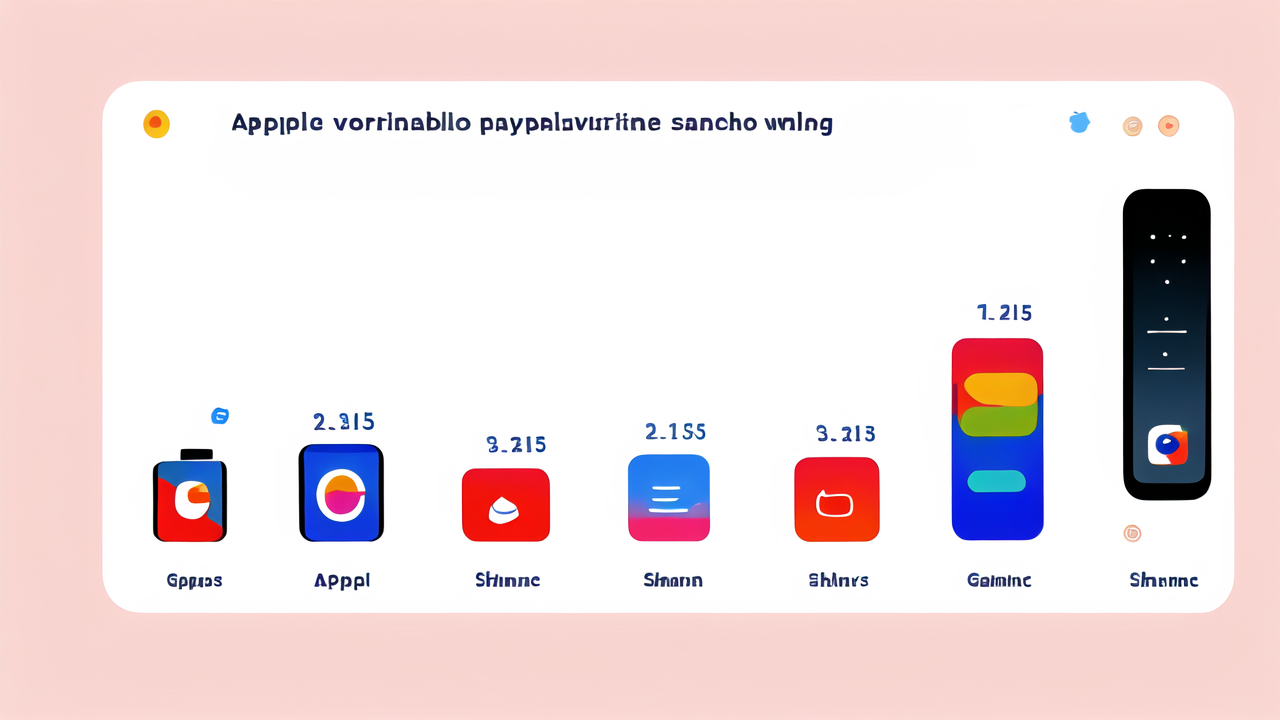The Rise of Wearable Technology and Its Impact on the Stock Market
Understanding the Market: A Brief History of Wearable Tech
Wearable tech has come a long way in recent years. It all started with simple fitness trackers. These devices could count steps and monitor heart rates. Then came smart watches. They offered more features and connected to our phones. The Apple Watch, launched in 2015, was a game-changer. It brought wearables into the mainstream.

Since then, the market has grown rapidly. We now have smart glasses, smart clothing, and even smart jewelry. These devices can track health, show notifications, and make payments. The technology keeps improving. Batteries last longer, and devices are getting smaller and more powerful. This growth has caught the eye of investors. Many see wearables as the next big thing in tech.
Key Players in the Wearable Tech Industry and Market Performance
Several companies dominate the wearable tech market. Apple leads with its Apple Watch. Fitbit, now owned by Google, is another major player. Samsung, Garmin, and Xiaomi also have a strong presence. These companies have seen their stock prices rise as wearables gain popularity.
Apple's success with the Apple Watch has boosted its stock. It's now the world's largest watch company by revenue. Fitbit's acquisition by Google shows the value big tech sees in wearables. Garmin has found success in sports and outdoor wearables. Their stock has performed well in recent years. Xiaomi offers affordable wearables, which has helped them gain market share.
Factors Driving the Popularity of Wearable Technology
Several factors are driving the growth of wearable tech. First, there's a growing focus on health and fitness. People want to track their activity and monitor their health. Wearables make this easy. Second, our lives are becoming more connected. Wearables fit into this trend perfectly. They keep us linked to our digital world.
Third, the technology is improving rapidly. Devices are more powerful and easier to use. Battery life is getting better too. Fourth, there's a cool factor. Wearables are seen as trendy and high-tech. This appeals to many consumers. Finally, prices are coming down. This makes wearables more accessible to a wider audience.
Analyzing Market Trends: Smart Watches and Wearables as Investment Opportunities
Market Analysis: Growth Projections and Consumer Trends
The future looks bright for wearable tech. Market research firms predict strong growth in the coming years. Some expect the market to double in size by 2025. This growth is driven by several factors. New features are making wearables more useful. For example, many now offer advanced health monitoring. The rise of 5G networks will also create new opportunities.

Consumer trends support this growth. People are becoming more health-conscious. They want devices that can help them stay fit and healthy. There's also a trend towards personalization. Wearables offer a way to customize technology to individual needs. As prices come down, more people are buying wearables. This trend is likely to continue.
Risk Assessment: The Volatility of Wearable Tech Stocks
Investing in wearable tech stocks comes with risks. The market is highly competitive. What's popular today might be old news tomorrow. Companies need to keep innovating. This can be expensive and risky. There's also the risk of market saturation. As more people buy wearables, growth might slow down. This could hurt stock prices.
Privacy concerns are another risk. Wearables collect a lot of personal data. If this data isn't protected well, it could lead to problems. There's also the risk of new regulations. These could impact how companies operate. Finally, there's always the risk of new technology making current wearables obsolete. Investors need to keep these risks in mind.
Diversification Strategies: Balancing Traditional and Smart Investments
When investing in wearable tech, it's wise to diversify. This means not putting all your money in one place. One strategy is to invest in a mix of big companies and smaller ones. Big companies like Apple are more stable. Smaller companies might offer more growth potential. Another approach is to look at related industries. For example, companies that make parts for wearables.
ETFs that focus on tech or consumer electronics can be a good option. They provide exposure to many companies at once. It's also smart to balance high-risk tech stocks with safer investments. This could include blue-chip stocks or bonds. The key is to find a balance that matches your risk tolerance and goals.
The Future is Wearable: Predicting the Next Big Thing in Fashion Tech
Innovations in Wearable Technology: What's Next for the Industry?
The future of wearable tech is exciting. We're likely to see devices become even more integrated into our lives. Smart clothing is one area to watch. Imagine shirts that can monitor your heart rate or adjust to keep you comfortable. Smart jewelry is another trend. Rings that can make payments or track your sleep are already here.

Health monitoring is a big focus. Future wearables might be able to detect diseases early. They could monitor blood sugar levels or even detect cancer. Augmented reality (AR) is another frontier. Smart glasses could overlay digital information on the world around us. We might even see brain-computer interfaces. These could let us control devices with our thoughts.
Impact of Wearable Technology on Fashion Retail and E-commerce
Wearable tech is changing the fashion industry. Traditional fashion brands are partnering with tech companies. They're creating stylish devices that blend form and function. This opens up new markets for both industries. It also creates challenges. Fashion brands need to keep up with fast-changing tech. Tech companies need to understand fashion trends.
E-commerce is also being impacted. Wearables provide valuable data on consumer behavior. This helps retailers personalize their offerings. AR technology could change how we shop online. Imagine trying on clothes virtually before buying. This could reduce returns and improve customer satisfaction. Wearables might also enable new ways to pay for goods online.
Investing in Wearable Innovations: A Guide for Future-Focused Investors
For investors interested in wearable tech, research is key. Stay informed about new technologies and trends. Look for companies that are innovating in areas like AI, AR, and health tech. These could be the next big winners. Pay attention to patents and research partnerships. These can give clues about future products.
Consider the whole ecosystem around wearables. This includes companies that make components, develop software, or analyze data. Keep an eye on startups and crowdfunding campaigns. These can provide early insight into new trends. Remember, investing in cutting-edge tech is risky. Always do your homework and consider talking to a financial advisor. The future of wearables is exciting, but smart investing requires careful thought and planning.




Leave a comment
This site is protected by hCaptcha and the hCaptcha Privacy Policy and Terms of Service apply.